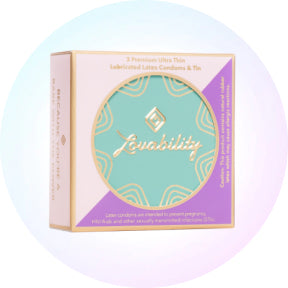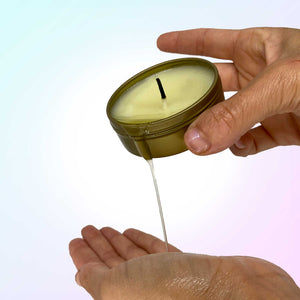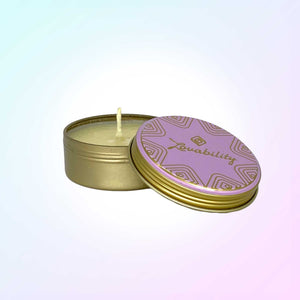Words are funny, powerful things. Most of the time, we probably live our lives without really stopping to think about our choice of words (beyond whether they’ll get us smacked). But if we take the time to look a little closer, we see that there is actually a huge diversity of words at our fingertips, and that for nearly every situation or emotion, there is a huge amount of nuance among our choices.
It comes as no surprise then that the language of sex and desire is no different! A lot of the time, it can be confusing how terms sometimes seem to overlap, how different resources or people use different terms, and how there just doesn’t seem to be an agreed-upon difference between words. I mean, how many times have you heard someone say, “that’s my kink!” without really knowing what exactly it means?
In many cases, this confusion about language comes from how sex (and the myriad of ways to practice it) is depicted in the media and popular culture. With the proliferation of inaccurate, uninformed media like Fifty Shades of Grey, the language around sexual practice can become jumbled and its individual meaning lost.
Kinks, fetishes, and sexual attraction are all different experiences. At first, it’s easy to see how they all get mentally filed away as “sexual practice language,” but let’s look closer to better understand the unique and beautiful experience of each so that we can empower ourselves and each other.
What Is A Kink?
Remember what I just said about those people who say, “OMG that’s my kink!”? Yeah, I definitely used to be one of them. I totally thought it was funny to say it about anything that I was attracted to – commitment, reading, brunettes, you name it. But those things aren’t actually kinks.
A kink is a way a person expresses sexual intimacy, and is often tied to how they define their sexual identity. It’s a manifestation of your desire and a practice of intimacy that is unique to each person. The most famous example is probably Bondage, Discipline, SadoMasochism (BDSM) and all that this encompasses. These practices are not the stuff of extreme (often misinformed and harmful) sexual fantasies, but are intimate, safe, sexual and emotional experiences. In fact, many people use BDSM as forms of psychotherapy linked to the activation of repressed emotions. In addition, role-playing (such as age-play and animal-based play) are also parts of the kink constellation.
So you can have a kink for spanking, but not for things like commitment or a love for reading – those are called “deal breakers.”
What Is A Fetish?
As opposed to a kink, which is sexual expression and intimacy, a fetish is a form of sexual desire linked to a specific object such as an item of clothing or a part of the body. With a fetish, the object of desire is the source of sexual pleasure – and orgasm or sexual gratification is often tied to that object. An example would be a foot fetish, or a fetish for panties, stilettos, etc. In these instances, it isn’t about the person attached to the foot or any other body part or piece of clothing – it is about the thing itself.
Examples of Fetishes
Just like with any form of sexual desire or expression, fetishes vary widely. They can include specific types of clothing, technologies, various flora, and even cultural stereotypes. The last example is incredibly fraught. While fetishes fixate on objects, they can also apply to cultures and people who are the victims of objectification.
A great (and personal) example of this is the fetishization of Asian women. Because of our Western conceptualization of the Asian woman as submissive, culturally inferior, and tied to the stereotype of the “anime girl” or “k-pop star,” Asian women are objectified to such a degree as to be considered a fetish. (If I have to hear “I’ve never been with an Asian before” one more time, I will implode.)
There is a huge difference between having an Asian fetish and being attracted to Asian women, but let’s save that topic for another article.
Distinguishing Sexual Attraction From Kink / Fetish
Sexual attraction is important to distinguish because it is often confused for having a “kink.” As you now know, you can’t have a “kink” for blue eyes or redheads, or even big butts (though if your sexual gratification is specifically tied to them, you could have a fetish!).
Sexual attraction is most easily explained as a desire-based response to a person’s character and/or physical body. There are a lot of things that can trigger sexual attractions such as intelligence, physical fitness, and biology/chemistry.
It’s like, “I would like to have sex with them because who they are press those buttons for me.” It is about the person themself, who they are and what he/she/they look like (not to be confused with: that is an Asian woman and I am placing assumptions about her personality/beliefs/practices on her because of that fact – that is a fetish).
Why Is It Important To Know The Difference?
OK – you might be wondering: why does this matter? “Kink” and “fetish” both have to do with sexual practice so why bother knowing the difference?
Words matter. The words we use to describe things can alter their meaning when used incorrectly, or without an understanding of the nuanced meaning. Also, the way that you use a word may not be the way another person interprets it – and, especially when talking about something as sensitive as sex, this might inadvertently cause harm. It can feel alienating to people who inhabit these sexual spaces when words like “kink” and “fetish” are misused or used in derogatory ways.
Talking Openly About Sex Minimizes Shame And Stigma
Condemning certain sexual practices throughout history has led to a lot of feelings of shame for those who practice them, and has inhibited us as a culture from feeling empowered to fully explore our sexual desires. Just imagine how much great sex everyone could be having if we lived in an open culture that normalized diverse sexual practices!
Of course, language is always changing. Just look at the word “queer” – it went from being a slur to being largely reclaimed by the community. It’s important to understand the language of the spaces that you inhabit, want to explore, or to which you are in proximity. It’s kind of like when you go to a new country and do your best to learn the customs and basic phrases as a practice of respect.
Language is intrinsic to our understanding of ourselves, others, and the world, cultures, and communities in which we live. Knowing and respecting the differences between these terms can help you analyze, discover, and interrogate your own sexual desires and practices. It will help you be sensitive, understanding, and accepting of all parts of the sex constellation (you included!). It can assist you in opening and facilitating dialogues about your desires with partners.
Understanding language and its proper usage is the first step towards undoing stigmas and creating a more sexually empowered future. So for all my kink and fetish-loving friends out there, let’s keep spreading the love one word at a time!
ABOUT THE AUTHOR
A graduate of UC Berkeley, Elizabeth Mason earned her degree in Gender and Women’s Studies. Currently, she is looking towards graduate school, and hopes to continue to focus her studies on womxn’s health and sexual wellness. Her main interests include identity politics and their relation to issues surrounding womxn’s healthcare and sexual liberation. She looks forward to the day when all womxn are empowered socially, politically, and – most importantly – sexually. She can be found on Instagram @elizabeth.mason.
More Articles You Might Love

Get To Know Your Vulva





















